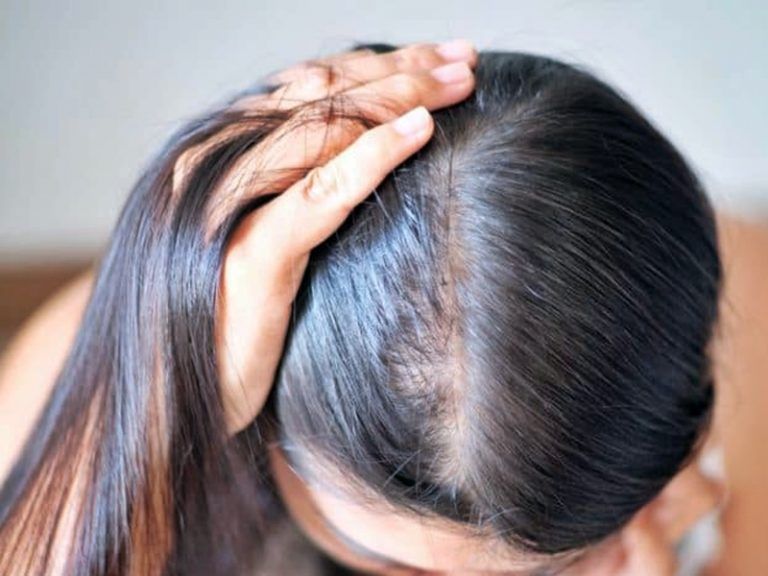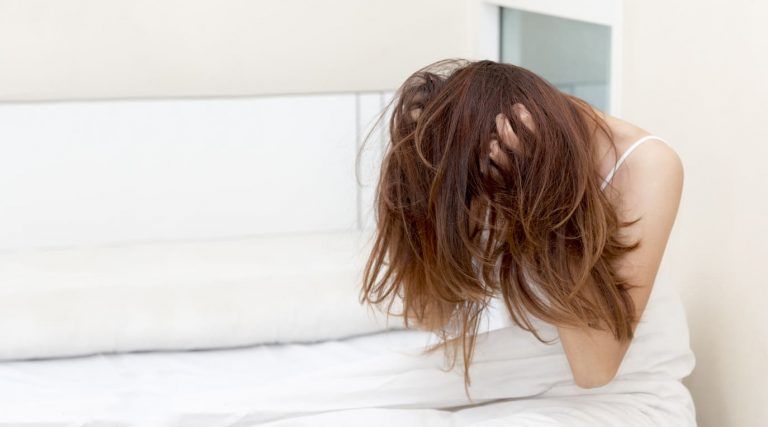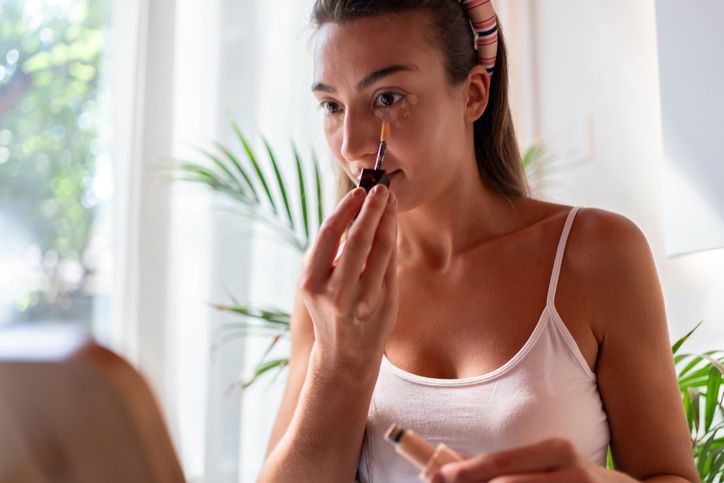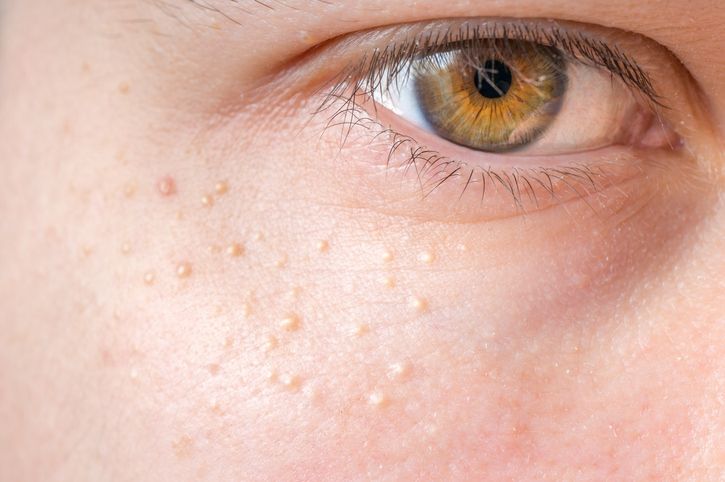- Home
- Trend
- Weight Loss Strategies
- Acne Tips
- Hair Health Information
- Blemish Removal Tips
- Acne Scar Removal Tips
- Muscle Building Techniques
- Intimate Care Tips
- Postpartum Intimate Care
- Eye Bags Wiki
- Tips for Face Slimming
- Secret of Permanent Hair Removal
- Breast Enlargement Tips
- Cure to Snoring
- Marionette Lines
- Skin-Tightening Secrets
Recognizing the early signs of hair loss is crucial! Unless you’re dealing with sudden-onset alopecia areata (commonly known as "spot baldness"), which is caused by temporary immune system imbalance, hair loss doesn't typically result in overnight bald patches. That’s why identifying the early warning signs and responding appropriately is key to halting further hair loss and saving your once luscious locks. After all, healthy hair is closely tied to one's appearance and confidence — plus, early signs of hair loss can also be a red flag for underlying health issues, so don’t ignore them!
Self-Test: 4 Ways to Detect Early Signs of Hair Loss

If you’re showing signs of hair loss, the sooner you act, the better. But how do you know when it’s time to see a specialist? Are you really experiencing hair loss, or just being paranoid? Although genetics is a major cause of hair loss, staring at your dad’s receding hairline all day won’t help (especially since male pattern baldness genes are usually inherited from your mother’s side). If you're concerned, try these 4 self-tests to check for early signs of hair loss:
Self-Test 1: The Pull Test
If you visit a hair specialist, one of the common clinical assessments — beyond examining your scalp and hair roots with the naked eye or magnifier — is the pull test. Using three fingers (thumb, index, and middle), gently grab about 100 strands of hair and lightly tug them downward. If more than 6 strands fall out, this could be a sign of early hair loss.
Self-Test 2: The Four-Finger Hairline Test
Is your hairline receding, or is your forehead just naturally high? There’s a simple way to find out. Straighten four fingers and place them vertically above the highest point of your eyebrows. Now check in the mirror — if your index finger touches or covers your hairline, your hairline is still within the normal range and hasn't receded.
Self-Test 3: Count Your Shed Hair
Seeing a bunch of hair fall out in the shower doesn't always mean hair loss. Don’t panic just yet — try counting how many strands you actually lose. Around 80% of daily hair shedding happens during washing, blow-drying, or brushing. If you wash your hair every 2–3 days, it’s normal to lose more hair during each wash. Collect and count the hair strands during your wash and grooming routine. Divide that total by 80 to get your approximate daily hair loss rate. If you’re consistently shedding more than 100 strands per day, or if there’s a sudden spike, it may signal early hair loss.
Self-Test 4: The Brushing Observation Test
Pick a day when you haven’t washed your hair, and gently brush it from front to back and side to side for one minute. Then observe how many strands fall onto the floor or your surroundings. Repeat this test over three days — if you consistently lose around 10 or fewer strands each time, that’s considered normal shedding, and you likely don’t have signs of hair loss.
What Are the Warning Signs of Hair Loss? 5 Major Hair Loss Symptoms

Hair Loss Symptom 1: Increased Hair Loss
As mentioned earlier, a noticeable increase in daily hair loss and hair becoming thinner or more easily broken are clear signs of hair loss. Each adult has about 100,000 hair follicles, with approximately 10% in the shedding or resting phase. Therefore, if you’re losing more than 100 hairs a day, this may be a warning sign of hair loss. Increased hair shedding is often accompanied by hair becoming more prone to falling out.
Hair Loss Symptom 2: Thinning Hair
The thickness of your hair directly reflects the health of your hair follicles. If your hair becomes thinner, it may indicate that the follicles aren’t providing enough nutrients. Often, the ends of the hair will be thicker and darker, while the roots, closer to the scalp, will appear thinner and weaker. This can also affect the hair color, causing it to fade or become dull and even turn gray. These are all warning signs of hair loss.
Hair Loss Symptom 3: Oily, Itchy, or Dry Scalp
If your scalp's condition changes, such as increased oiliness that makes your hair greasy soon after washing or excessive dryness that leads to itching, this may indicate a problem. You might also notice increased dandruff when scratching your scalp or combing your hair. A significant change in scalp condition may signal scalp issues such as allergies, inflammation, or seborrheic dermatitis, which, if left untreated, could progress into seborrheic hair loss.
Hair Loss Symptom 4: Receding Hairline
Both men and women experience a receding hairline as a sign of hair loss. For women, the hair loss is typically diffuse and widespread, while men tend to lose hair first at the forehead and crown. If the hairline continues to recede, an M-shaped hairline may form. For women, advanced hair loss leads to a reduction in hair volume and noticeable thinning along the hairline, which greatly impacts appearance. To avoid looking 15 years older, it's important to address hair loss warning signs early.
Hair Loss Symptom 5: Anemia, Insomnia, and Poor Blood Circulation
Studies show that people with anemia are more likely to experience hair loss because hair follicles require a sufficient blood supply for nutrients. Without these nutrients, the hair cannot grow properly, leading to poor hair quality and potential hair loss symptoms. In traditional Chinese medicine, anemia, weak blood circulation, poor digestion, and energy imbalances can also lead to hair loss. People with weak digestion struggle to absorb nutrients, while those with low energy cannot deliver sufficient nutrients to the scalp. In addition to hair loss, these issues may cause insomnia and digestive problems. Hair loss may be an early warning of hidden health problems or immune system disorders, so it should never be ignored.
免費體驗
F8 Hair Regrowth Treatment
1 Minute Self-Registration
Date should not be before minimal date
Phases of Female Hair Loss
Phase 1: The hairline recedes, and "cat ears" (recessions on both sides of the forehead) appear, widening the hair part.
Phase 2: The part continues to widen, exposing more of the scalp, and overall hair volume decreases, with thinning most noticeable at the crown.
Phase 3: Ultimately, the crown and hairline areas become bald.
What Are the Warning Signs of Hair Loss According to Traditional Chinese Medicine (TCM)?
Traditional Chinese Medicine (TCM) links hair loss closely to overall body health and constitution. The saying "Hair is the surplus of blood" encapsulates the connection between blood and hair health. Imbalances such as blood heat, blood stagnation, blood deficiency, and others are often seen as signs of hair loss. Why is hair loss often the first symptom of health problems? This is because hair and nails are the fastest-growing and metabolizing parts of the body. When there’s a problem with overall health or lifestyle habits, it manifests in the condition of the hair.
TCM believes that the health of the scalp is the root of healthy hair. Maintaining good scalp health is crucial. Persistent symptoms like insomnia, poor digestion, dizziness, fatigue, and dry mouth, among others, are signs of more serious underlying issues in the body that can also affect hair health. The two main approaches in TCM for treating hair loss symptoms and actual hair loss are to replenish blood and improve scalp circulation, and to balance the body's internal heat to prevent it from affecting the scalp and causing excess oil or inflammation that leads to seborrheic hair loss.
5 Common Causes of Hair Loss
Cause 1: Genetic Male Pattern Baldness
Male pattern baldness is the most common cause of hair loss, often occurring as a result of inherited genes. It typically starts in men in their 30s but can also affect younger individuals with early follicle aging. Female pattern baldness manifests as widespread thinning of the hair rather than localized bald spots.
Cause 2: Stress
Stress-induced hair loss is the second most common type after male pattern baldness. Stress not only affects mental well-being but can disrupt physical health by causing hormonal imbalances, increased oil secretion, and immune system disorders, leading to seborrheic dermatitis, hair loss, and other scalp issues.
Cause 3: Poor Diet
Unhealthy eating habits can trigger hair loss symptoms. Extreme dieting can lead to nutritional deficiencies, leaving the scalp without the necessary nutrients for healthy hair growth. Conversely, excessive intake of high-fat, high-sugar, and high-GI foods can cause digestive issues, dampness in the body, and increased oil production on the scalp, contributing to scalp irritation and hair loss.
Cause 4: Postpartum Hair Loss
Postpartum hair loss is a common condition experienced by many new mothers. During pregnancy, elevated estrogen levels promote hair growth, but after childbirth, estrogen levels drop sharply, disrupting the hair growth cycle and leading to hair shedding.
Cause 5: Incorrect Hair Care Habits
Washing, coloring, and perming hair don’t inherently cause hair loss, but excessive care can damage the scalp. Frequent washing due to concerns about scalp cleanliness, or overuse of oil-controlling products and dry shampoo, can strip the scalp’s natural oils. Similarly, frequent chemical treatments can leave residue on the scalp, weakening its barrier and contributing to hair loss symptoms.
免費體驗
F8 Hair Regrowth Treatment
1 Minute Self-Registration
Date should not be before minimal date
How Does Traditional Chinese Medicine (TCM) Improve Hair Loss?
As mentioned, TCM views hair loss as a warning sign of underlying health issues. Therefore, seeking TCM treatment is about improving overall health rather than just addressing the hair issue. In young people who experience early hair loss, TCM often identifies immune system imbalances or poor lifestyle habits as the causes, rather than genetic male pattern baldness.
TCM associates hair loss with liver and kidney health, as well as blood circulation. If the liver and kidney meridians are weak, blood flow can be disrupted, leading to blood heat, stagnation, and other symptoms that affect hair health. TCM treatment for hair loss includes personalized herbal medicine to regulate the body’s five organs and six viscera, along with dietary advice. TCM also uses topical treatments, such as herbal scalp masks for anti-inflammatory effects, and other therapies like herbal head steaming, infrared light therapy, or gentle scalp acupuncture to promote circulation and nourish hair follicles for healthy hair growth.
How does Western medicine improve hair loss?
Western medical treatments for hair loss can be divided into hair growth medications, hair growth solutions, hair transplant surgery, and laser hair treatments, each corresponding to different stages of hair loss. Below, we will explain each one in detail:
Western Medical Treatment for Hair Loss 1. Prescription Hair Growth Medications
A hair specialist or doctor will typically prescribe the first-line medications to treat hair loss after clinically examining the patient’s hair and scalp condition and determining the cause of hair loss. Minoxidil and Finasteride are both recognized as safe and effective treatments.
Finasteride is an oral hair growth medication that effectively inhibits the formation of DHT hormones in the body, thus reducing hair loss. However, its primary effect is on preventing further hair loss, meaning it does not encourage faster hair growth beyond the normal growth cycle. It is important to note that most men taking Finasteride experience sexual dysfunction and even mood disturbances. This medication is not recommended for women. Minoxidil, on the other hand, is a topical solution that must be applied regularly to the scalp. Although it can effectively stimulate hair growth, many users report that hair loss increases once they stop using it.
Western Medical Treatment for Hair Loss 2. Low-Level Laser Therapy (LLLT)
Hair growth medications prescribed by doctors may have unavoidable side effects. Many hair treatment centers now offer low-level laser therapy (LLLT), which uses low-energy lasers to penetrate the scalp, improve blood circulation, and reduce the negative effects of male hormones on hair loss. It enhances blood flow to hair follicles, providing them with more nutrients and promoting cell proliferation, all without side effects or the need for medication. This treatment can improve scalp health and reverse hair loss.
Western Medical Treatment for Hair Loss 3. Hair Transplant Surgery & Stem Cell Hair Growth Factors
As the name suggests, hair transplant surgery involves relocating healthy hair follicles to balding areas. While hair transplant surgery offers more immediate and noticeable results, an adult’s total number of hair follicles is fixed at about 100,000, which only decreases over time. Once healthy follicles are transplanted to a balding spot, their number will decrease, and as hair loss continues, there will be no more healthy follicles to transplant. Moreover, the results of hair transplants are not guaranteed, and scalp wounds can lead to folliculitis.
Stem cell hair growth factors are a newer technique. By extracting growth factors from scalp follicles, this method activates hair regrowth. It involves extracting 2g of vascular cells from the patient’s scalp and using advanced micro-cutting technology to collect stem cells and growth factors. These are then injected into the scalp to stimulate the regeneration of damaged hair follicles, helping to reverse hair loss.
Four Habits to Prevent Hair Loss—Reversing the Early Signs of Hair Loss!
Reversing the Early Signs of Hair Loss 1. Proper Hair Washing Habits
When it comes to washing your hair, the most important factor is choosing the right shampoo. To find the shampoo that works best for you, it’s important to first understand your scalp’s skin type. If you feel oily or itchy within a day of not washing your hair, you likely have an oily scalp. If your hair doesn’t become oily after 2-3 days, you have a normal scalp. If your scalp feels tight or itchy after washing, and doesn’t have oil problems even after 3 days, you likely have a dry scalp. Avoid using harsh shampoos and choose one suitable for your scalp to maintain a healthy, comfortable environment. If changing shampoos doesn’t help prevent or reverse hair loss, you should consider seeing a hair specialist for prescription anti-inflammatory and antibacterial treatment.
Reversing the Early Signs of Hair Loss 2. Avoid Frequent Hair Dyeing and Perming
Dyeing and perming not only make hair brittle and prone to breakage but also leave a significant amount of chemicals on the scalp. In particular, bleaching and dyeing can cause further irritation, and thick, sticky color-locking shampoos can clog the scalp’s pores. To prevent hair loss, avoid frequently dyeing or perming your hair, and take good care of your natural dark, thick hair.
Reversing the Early Signs of Hair Loss 3. Improve Your Diet and Avoid Sugary Foods
Have you noticed signs of hair loss after dieting or losing weight quickly? It’s likely due to malnutrition or hormonal imbalance caused by poor eating habits, which lead to follicle shrinkage. Even if your diet is generally balanced, eating too well can cause hair loss! Overindulgence in oils, sugars, and high-glycemic foods can not only increase your weight but also trigger excessive oil production in your skin and body, leading to oxidation and inflammation—conditions that promote seborrheic hair loss.
Reversing the Early Signs of Hair Loss 4. Seek Medical Attention and Reduce Stress
As early signs of hair loss become more common, most people understand that the earlier you seek treatment, the better. It’s always best to see a doctor, but hair growth has its own cycle. After using hair growth medications and treatments, you might not see immediate results. Regrowing hair takes patience, so don’t put too much pressure on yourself. Additionally, stress affects both physical and mental health, worsening hair loss. It’s essential to seek medical help, manage stress, and improve lifestyle and dietary habits. Don’t obsess over your hair every day.
免費體驗
F8 Hair Regrowth Treatment
1 Minute Self-Registration
Date should not be before minimal date
Early Signs of Hair Loss? We Offer Low-Energy Laser Hair Growth Treatments!
Noticing signs of hair thinning, a receding hairline, or increased shedding? Our F8 hair treatment focuses on three principles: “stopping hair loss,” “activating follicles,” and “regenerating hair growth.” Using 650nm LLLT low-energy laser technology, the treatment penetrates the scalp to stimulate melanin absorption by hair follicles, making hair thicker and stronger. This technology also boosts blood flow to the follicle area, speeding up ATP synthesis and activating the hair papilla, allowing hair to return to a normal growth cycle. The second half of the treatment involves injecting exclusive medical hair growth serum to strengthen both the scalp and hair, making hair thicker and healthier.
Our F8 laser hair growth treatment is entirely non-invasive, painless, and requires no medication. It’s suitable for people with various types of hair loss, giving everyone the chance to restore their hair. Perfect Medical's hair growth experts will examine and analyze your hair and scalp, understand your personal and family background, lifestyle, and dietary habits, and recommend the most suitable treatment plan based on your needs. Take just one minute to register for the F8 treatment and prevent hair loss from advancing!
Register Today: Perfect Medical F8 Hair Regrowth Treatment免費體驗
F8 Hair Regrowth Treatment
1 Minute Self-Registration
Date should not be before minimal date
FAQ

What are the early signs of hair loss?
Increased shedding: If your hair loss increases significantly, or you’re shedding more than 100 hairs a day, it could be a sign of early hair loss. Thinning hair: As hair health declines, it becomes finer. Thinning hair reflects a lack of nutrients in the follicles, which leads to hair loss. Oily or dry scalp: If your scalp becomes oilier or drier than usual, or if you notice more dandruff, it could signal hair loss. Receding hairline: Both men and women may notice a receding hairline. For women, it’s more diffuse, while for men, it typically starts at the temples and crown. Anemia, insomnia, and insufficient blood flow: Studies show that people with anemia are more likely to experience hair loss because hair follicles need sufficient blood supply to grow.
What are the stages of female hair loss?
Female hair loss progresses in three stages: Stage 1: The hairline recedes, with a cat ear shape and a widening part. Stage 2: The hairline continues to recede, the scalp becomes visible, and the hair thins, especially at the crown. Stage 3: Eventually, the crown and hairline areas become completely bald.
What are common causes of hair loss?
Genetic male pattern baldness: This is caused by genetic hair loss, typically starting in men in their 30s or later. Women may experience thinning, but it’s different from men’s baldness. Excessive stress: Stress can cause hormonal imbalances that increase oil production, disrupt immune functions, and lead to conditions like seborrheic dermatitis, seborrheic hair loss, or alopecia areata. Dietary habits: Nutritional deficiencies caused by extreme dieting or overeating can both contribute to hair loss. Postpartum hair loss: After childbirth, the rapid drop in estrogen levels can cause temporary hair loss. Incorrect hair care habits: Excessive washing, oil control products, or frequent hair dyeing can damage the scalp's natural oil barrier, causing hair loss.
How does Traditional Chinese Medicine (TCM) view the early signs of hair loss?
TCM believes that hair loss is closely related to overall health. The saying Hair is the excess of blood reflects the connection between blood and hair health. When the body is in poor health, hair is one of the first signs to show it. TCM emphasizes the importance of scalp health for hair growth, and treating underlying health issues such as poor digestion or fatigue can help address hair problems.
What treatments can truly solve and prevent hair loss?
The F8 treatment, based on stopping hair loss, activating follicles, and regenerating hair, uses 650nm LLLT laser technology to stimulate hair follicles, making hair thicker and stronger. The second phase involves injecting a specialized serum to improve scalp health and promote thicker hair growth.









